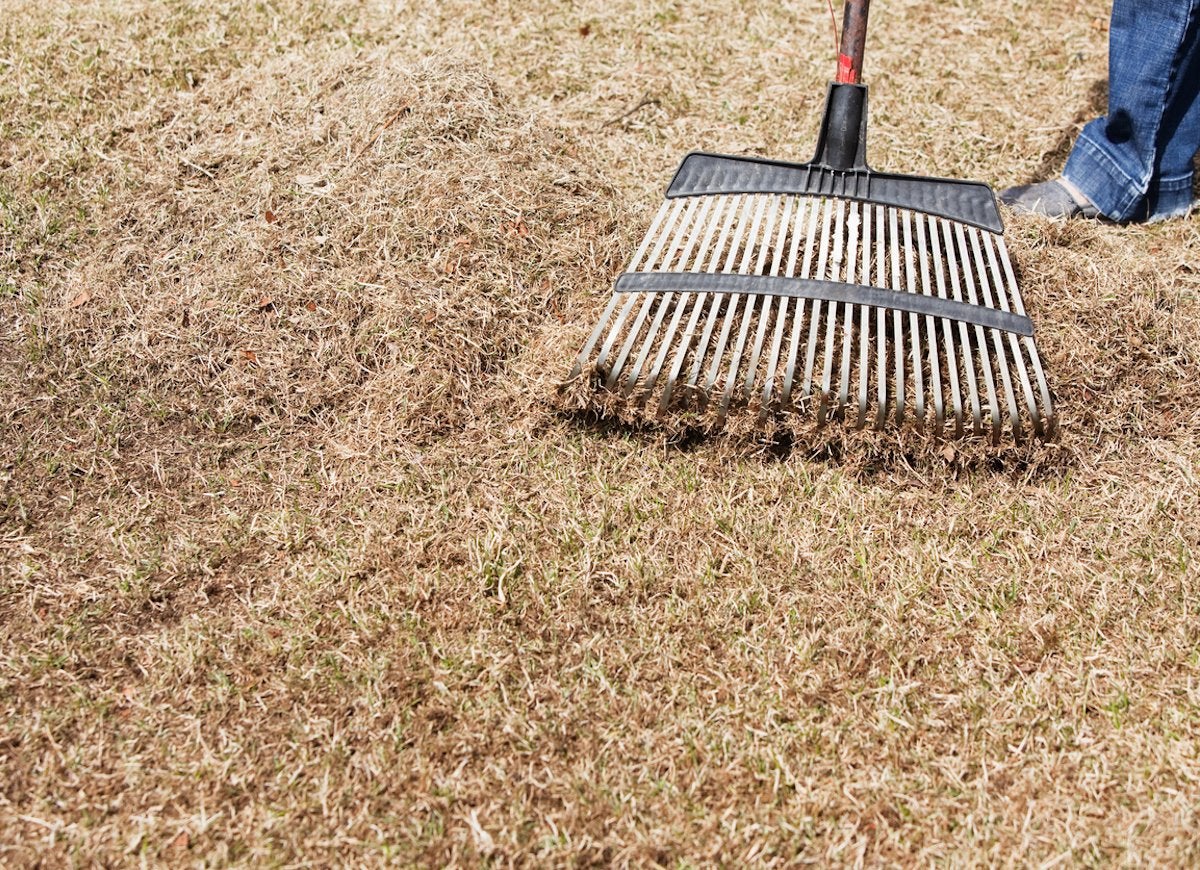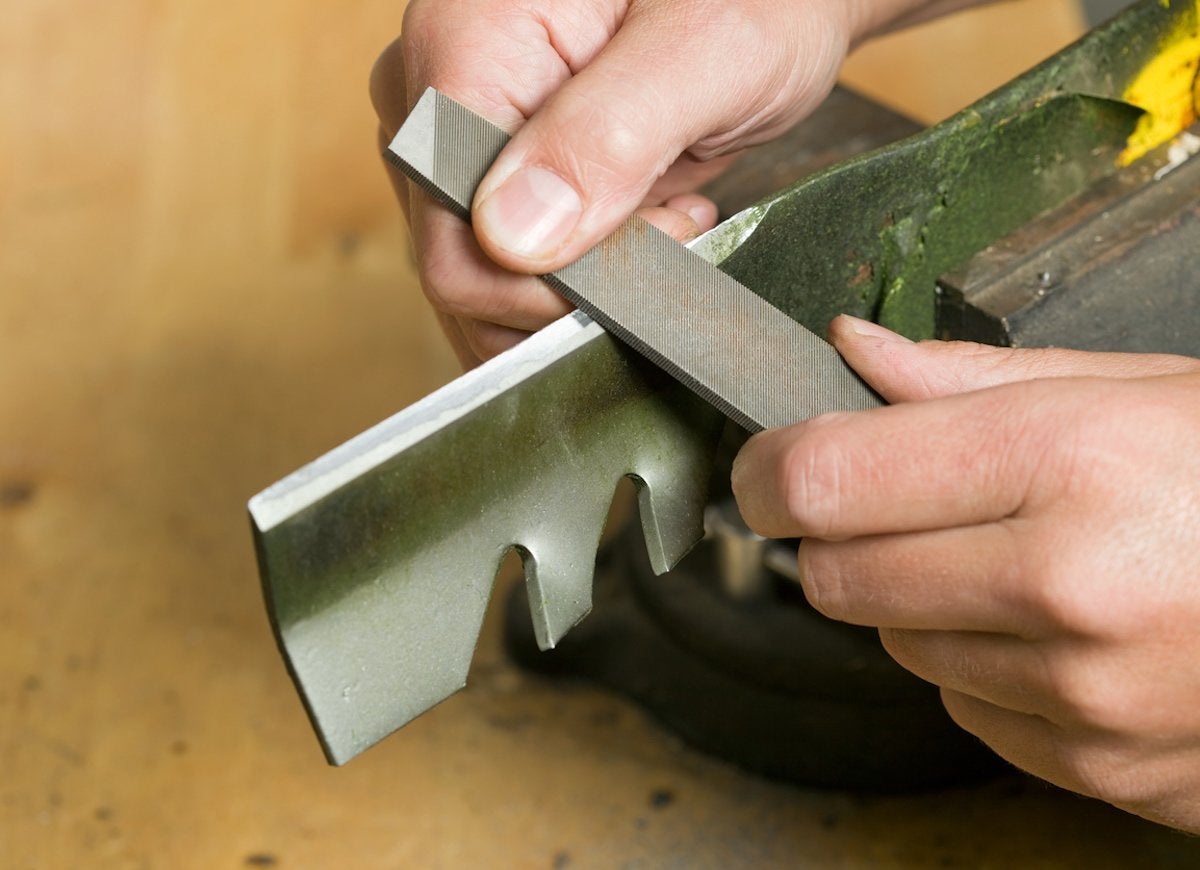We may earn revenue from the products available on this page and participate in affiliate programs. Learn More ›
How To Get a Lush Landscape

A great-looking lawn doesn’t just happen. It takes lots of care to keep your grass healthy and green. Luckily, the secrets to fabulous, lush grass are available to anyone who wants to learn how to master their own backyard. Put this simple advice into practice all year long.
Mulch

Skip bagging your grass clippings. Instead, mulch them into your lawn, where they’ll decompose, adding nutrients into the soil. Word to the wise: If your lawn is full of weeds, then your clippings will most likely be full of weed seeds. If you don’t want to sprout new weeds, stick to bagging your clippings until you get your weed problem under control.
Aerate

Of course, grass needs sun and water to thrive. But it also needs air. That’s why it’s important to aerate your lawn if you notice that the soil has become compacted. Aerating your lawn, either with a push aerator or a gas-powered aerator (you can rent one from a big-box store), will allow air, water, and nutrients to penetrate to the roots of your turfgrass, helping it to flourish.
Cut High

It may seem like a good idea to give your lawn a crew cut so you can mow less frequently, but doing so can actually harm your grass. Never cut more than one-third of the length of the grass blade at any one time, or you can cause stress to your turf, leaving it more vulnerable to blight and disease. Additionally, extra height during the hottest and sunniest months of the year can help protect your grass from scorching.
Related: 9 Mowing Mistakes Everyone Makes
Water Deeply and Less Often

Avoid watering your grass daily, unless it’s a particularly dry summer. Frequent, shallow watering encourages shallow roots and ultimately weakens turfgrass. The best thing to do is to water your grass deeply and less frequently. Occasional watering prompts the roots to grow deeper, giving your grass the strength it needs to weather hot conditions.
Dethatch

Thatch is dead plant material that builds up between the grass blades and roots. A little is OK, even healthy. But too much thatch is a bad thing. If your lawn has a layer of thatch that’s more than three-quarters of an inch thick, it’s time to dethatch. This can be done with a thatch rake (for smaller lawns) or a power rake (for larger expanses). Removing that layer of thatch will let water and air penetrate the soil, improving the health of your lawn.
Test Your Soil

Testing your soil every year will arm you with information about its pH level. For a lawn to grow healthy, it usually needs a pH level of between 5 and 7. If your soil is too alkaline—if it has a pH level greater than 7—add sulfate to make it more acidic; if it’s too acidic, add lime to reduce the acidity and bring it into balance.
Fertilize

Usually, your soil is not able to provide all the nutrients your turfgrass needs throughout the entire growing season. That’s why it’s important to fertilize when needed. When you should fertilize and the type of fertilizer you should use are determined by the type of grass you are growing. Warm-season grasses should be fertilized as they come out of dormancy in the spring. Cool-season grasses should be fertilized heavily in the fall and lightly in early spring.
Mix Up Your Mowing

Don’t mow your grass the same way every time. Mix up the direction you mow to help reduce soil compaction, encourage upright growth of grass blades, and help you get a more uniform cut.
Keep Your Mower Blades Sharp

Be sure to keep your mower blades sharp. A dull blade will rip the top of the grass instead of cutting it, making its healing process longer and more difficult, and leaving your lawn looking ragged in the process.
Seed at the Right Time

Every lawn needs occasional reseeding, whether to fill in bare patches or thicken an existing lawn. For most varieties, seeding is more successful in early spring, though growth may be slow if the weather is cold. Fall is also an excellent time to seed. Autumn seeding gives young turfgrass plants an opportunity to establish themselves before winter dormancy, so they’ll have a head start when spring arrives.
Add Compost

Feed your lawn essential nutrients with a layer of compost. This natural option will add organic matter back into the soil for healthier grass. Handle this task at the end of fall so it can have the entire winter to break down and integrate into the soil. Come spring you’ll have a beautiful lawn!
Pay Attention to the Weather

Having a weekly routine for chores is an excellent way to maintain your home, but when it comes to lawn care you can’t always be so rigid. It’s important to pay attention to the weather so you can adjust your mowing and watering schedule accordingly. There’s no reason to water the lawn if it recently rained, and you certainly don’t want to mow if the grass is wet. You should also mow less frequently if your area is going through a drought since the grass grows more slowly. Use a voice assistant tool, like Ask Troy-Bilt, to help determine when you should be mowing based on the local weather.
Related: 12 Tips for Homeowners Who Want to Spend Less Time Mowing
Understand Your Lawn

The best way you can care for your yard is understanding its needs. Unfortunately, this usually requires a bit of guesswork. To save you from making too many mistakes (a waste of time, effort, and money) the subscription service Lawn Serv provides you exactly what you need for your specific yard. Once you send in the size of your property and a soil sample, every month they’ll send you a box of products based on the soil analysis and region’s climate. Having this insight about your lawn will be a game changer.
Set a Timer

You know watering the lawn is important, but it’s also another thing you’re forced to remember to do. If you’re forgetful about this landscaping task—including remembering to turn off the sprinkler—then set a timer. Sprinkler timers, available at your local hardware store, easily attach to your hose and can be scheduled to automatically turn on and off. For a low-tech option, set an alarm or timer on your phone. This not only is smart for the forgetful, but it saves you from overwatering as well.
Get Rid of Grubs

Grubs, the larvae of various beetles, are a natural part of the landscape. Every lawn will have a few, but too many and you’ll begin to notice brown patches. To avoid an infestation, apply milky spore every year.
Related: How To: Get Rid of Grubs
Leave the Leaves

It’s everyone’s inclination that you must rake up the leaves, but that’s not necessarily true. While a heavy layer of leaves will smother the lawn, a moderate amount can be used as mulch. Rather than raking, run the mower over the leaves until they’re chopped into small pieces. The bits and pieces will provide beneficial nutrients to the lawn.
Get Rid of Weeds

Take control of the weeds sprouting in the yard before they overwhelm the landscape. It’s much easier to pull out one weed than dozens of them. You could opt for a chemical treatment, but there are many simple all-natural solutions for killing them, like using cornmeal or boiling water.
Related: 9 Natural Ways to Kill Weeds
Choose the Right Mower

Using the right mower for your yard will make it much easier to care for the lawn. Consider the size of your property when selecting a lawn mower—using a walk-behind mower when you have acres of grass to cut will make the task feel daunting every time and won’t be as effective as a riding mower. You also have to factor in the type of grass—the thicker the grass, the higher the horse power you’ll need.

Save Energy While Staying Cozy
Today’s energy-efficient space heaters warm individual rooms, so users needn’t heat unoccupied areas of the house. We tested the most popular space heaters on the market to find out which ones performed the best.

